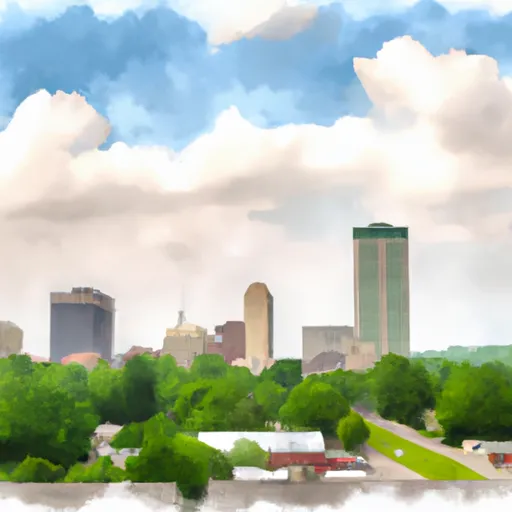-
 Snoflo Premium
Snoflo Premium
Get unlimited access to all our content
With no Ad interruptions! - Start Your Free Trial Login with existing account
White-Plains
Eden Index
Climate
8.0
•
Recreation
1.1
•
Community
•
Safeguard
3.6/10

White Plains is a small town located in Hopkins County, Kentucky. The town experiences a humid subtropical climate with hot summers and mild winters. Summers are typically hot and humid, with temperatures often reaching the mid-90s Fahrenheit (mid-30s Celsius). Winters are relatively mild, with temperatures averaging in the mid-40s Fahrenheit (7-9 degrees Celsius). The area receives a moderate amount of rainfall throughout the year, with precipitation evenly distributed.
White Plains is not known for any major hydrological constituents. It does not have any significant rivers or lakes within its immediate vicinity. However, there are several small creeks and streams that flow through the town, contributing to the local hydrology.
Outdoor recreation opportunities in White Plains are abundant. The town is surrounded by picturesque countryside, offering opportunities for hiking, biking, and nature walks. The nearby Pennyrile State Forest provides a beautiful natural setting for camping, fishing, and wildlife spotting. The Green River, located a short drive away, offers canoeing, kayaking, and boating opportunities. Additionally, the town has several parks and green spaces where residents and visitors can enjoy picnicking, sports, and leisurely strolls.
What is the Eden Index?
The Snoflo Eden Index serves as a comprehensive rating system for regions, evaluating their desirability through a holistic assessment of climate health, outdoor recreation opportunities, and natural disaster risk, acknowledging the profound impact of these factors on livability and well-being.
Climate Health Indicator (CHI): 8.0
White-Plains receives approximately
1250mm of rain per year,
with humidity levels near 81%
and air temperatures averaging around
15°C.
White-Plains has a plant hardyness factor of
6, meaning
plants and agriculture in this region thrive during a short period during spring and early summer. Most
plants will die off during the colder winter months.
By considering the ideal temperature range, reliable water supplies, clean air, and stable seasonal rain or snowpacks, the Climate Health Indicator (CHI) underscores the significance of a healthy climate as the foundation for quality living.
A healthy climate is paramount for ensuring a high quality of life and livability in a region, fostering both physical well-being and environmental harmony. This can be characterized by ideal temperatures, reliable access to water supplies, clean air, and consistent seasonal rain or snowpacks.
Weather Forecast
Streamflow Conditions
Green
Area Rivers
Green
Snowpack Depths
Green
Reservoir Storage Capacity
Green
Groundwater Levels
Recreational Opportunity Index (ROI): 1.1
The Recreational Opportunity Index (ROI) recognizes the value of outdoor recreational options, such as parks, hiking trails, camping sites, and fishing spots, while acknowledging that climate plays a pivotal role in ensuring the comfort and consistency of these experiences.
Access to outdoor recreational opportunities, encompassing activities such as parks, hiking, camping, and fishing, is crucial for overall well-being, and the climate plays a pivotal role in enabling and enhancing these experiences, ensuring that individuals can engage in nature-based activities comfortably and consistently.
Camping Areas
| Campground | Campsites | Reservations | Toilets | Showers | Elevation |
|---|---|---|---|---|---|
| Deerlick | 46 | 294 ft | |||
| Payne Lake East Side | None | 362 ft | |||
| Payne Lake West Side | None | 282 ft | |||
| Burchfield Branch Park | 36 | 473 ft | |||
| Joe Wheeler State Park | 116 | 573 ft | |||
| Payne Lake Spillway | None | 267 ft | |||
| Holt Lake | None | 187 ft | |||
| David Crockett State Park | 107 | 947 ft | |||
| Blue Creek | None | 195 ft | |||
| Meriwether Lewis | 32 | 963 ft |
Nearby Ski Areas
Catastrophe Safeguard Index (CSI):
The Catastrophe Safeguard Index (CSI) recognizes that natural disaster risk, encompassing floods, fires, hurricanes, and tornadoes, can drastically affect safety and the overall appeal of an area.
The level of natural disaster risk in a region significantly affects safety and the overall livability, with climate change amplifying these risks by potentially increasing the frequency and intensity of events like floods, fires, hurricanes, and tornadoes, thereby posing substantial challenges to community resilience and well-being.
Community Resilience Indicator (CRI):
The Community Resilience Indicator (CRI) recognizes that education, healthcare, and socioeconomics are crucial to the well-being of a region. The CRI acknowledges the profound impact of these elements on residents' overall quality of life. By evaluating educational resources, healthcare accessibility, and economic inclusivity, the index captures the essential aspects that contribute to a thriving community, fostering resident satisfaction, equity, and social cohesion.

